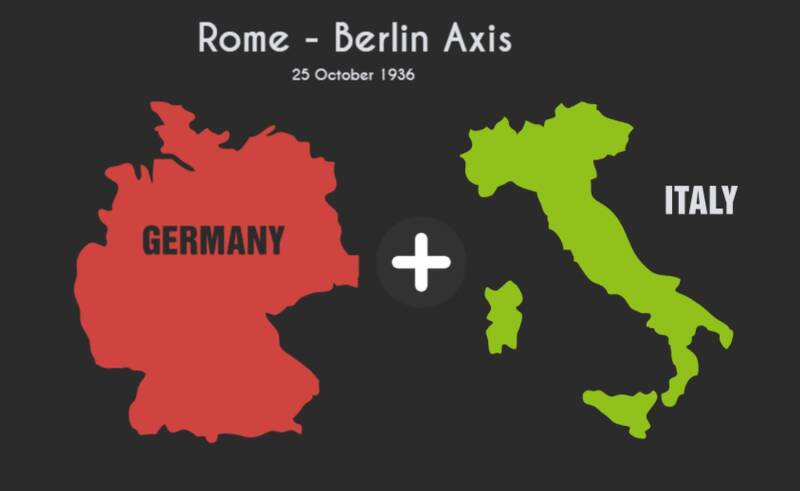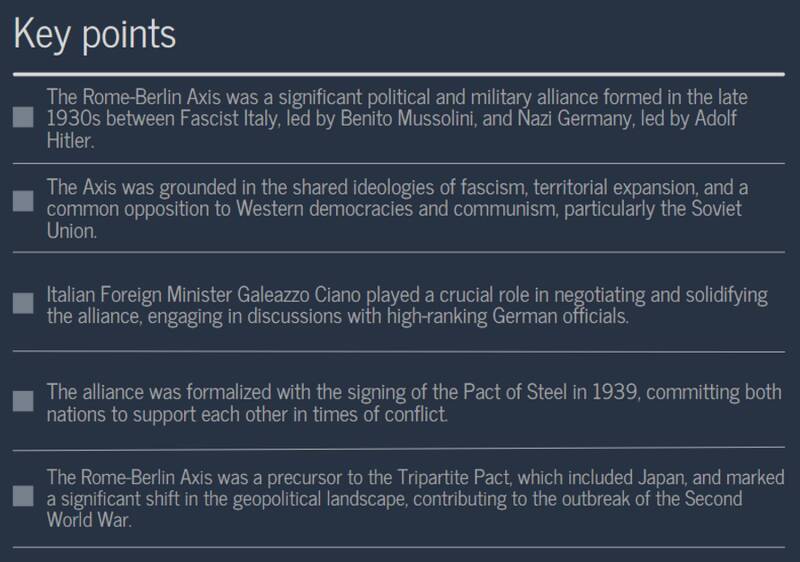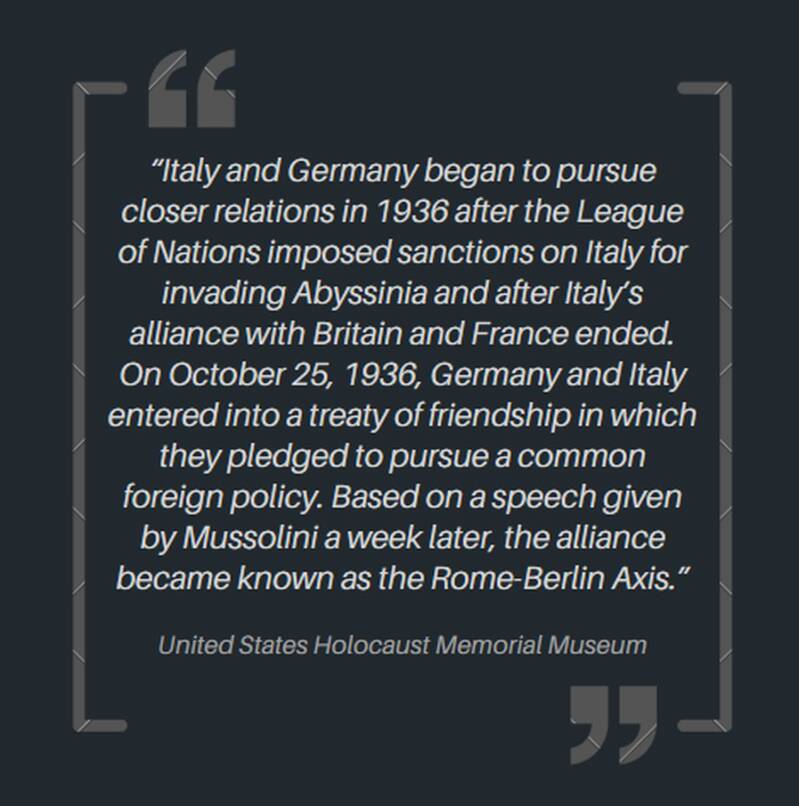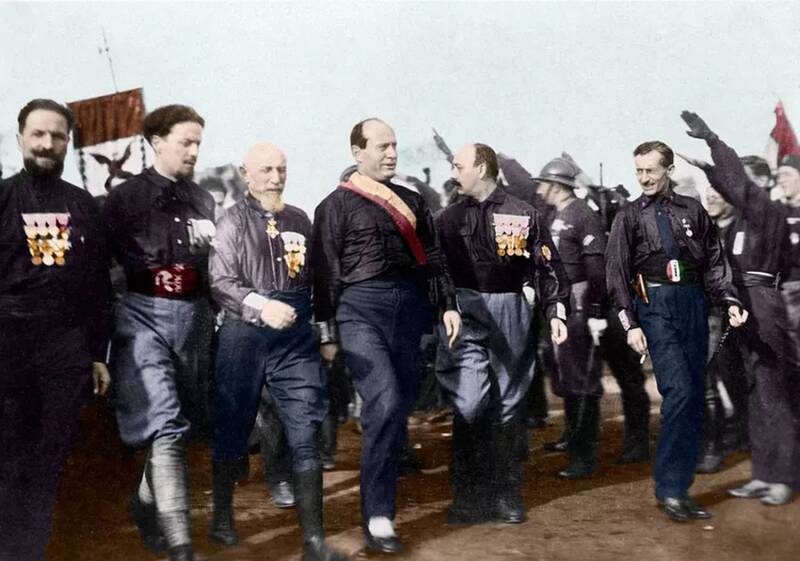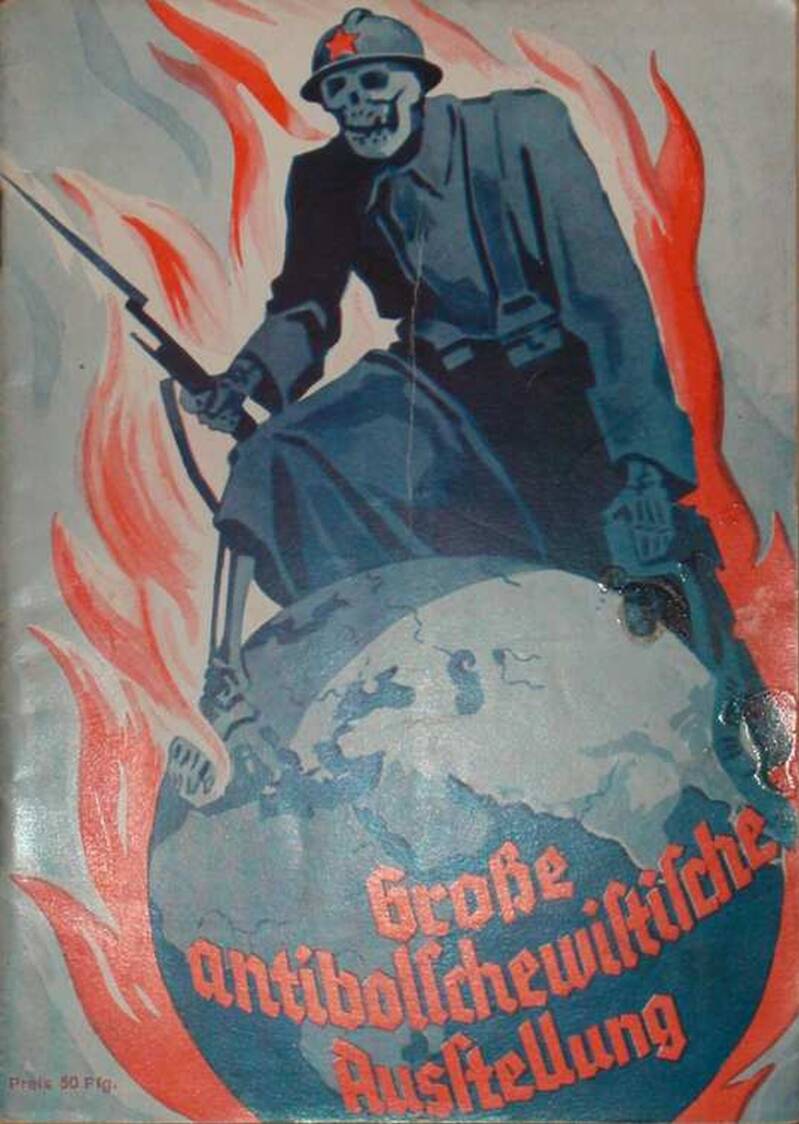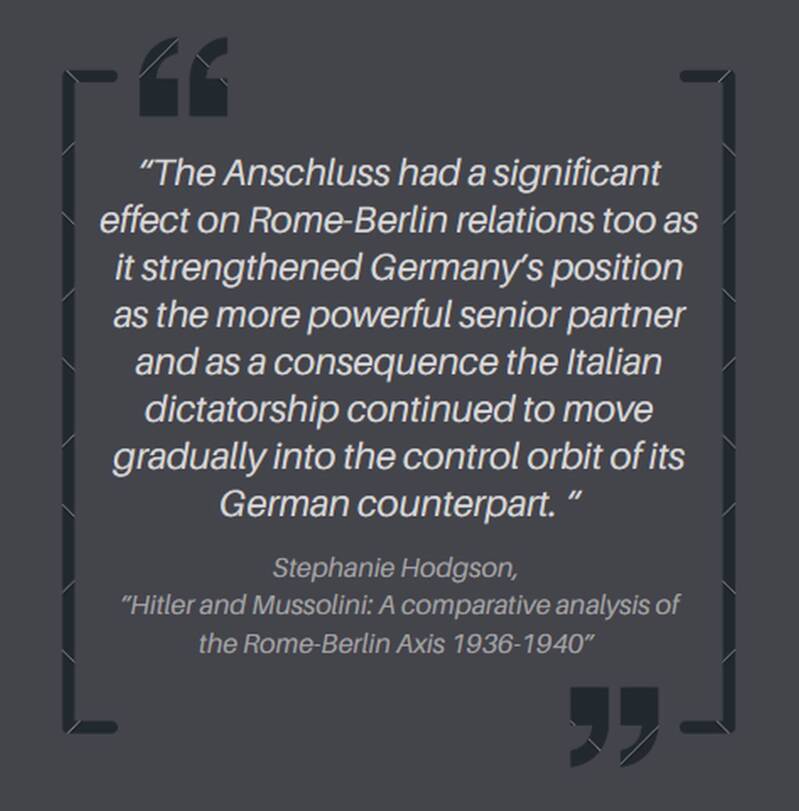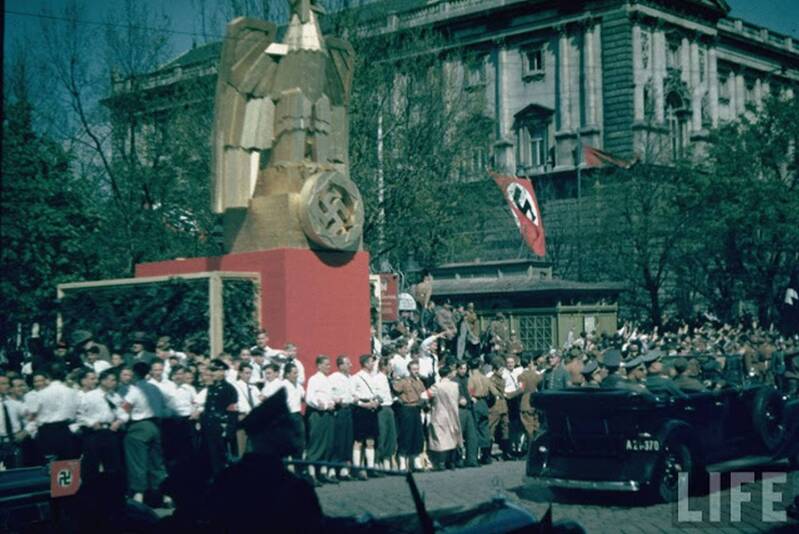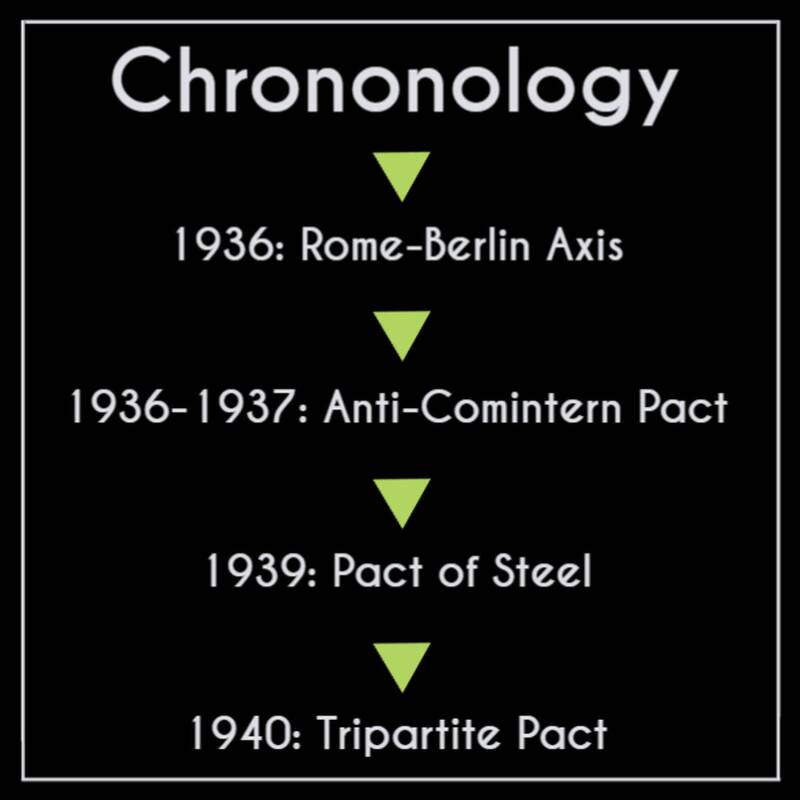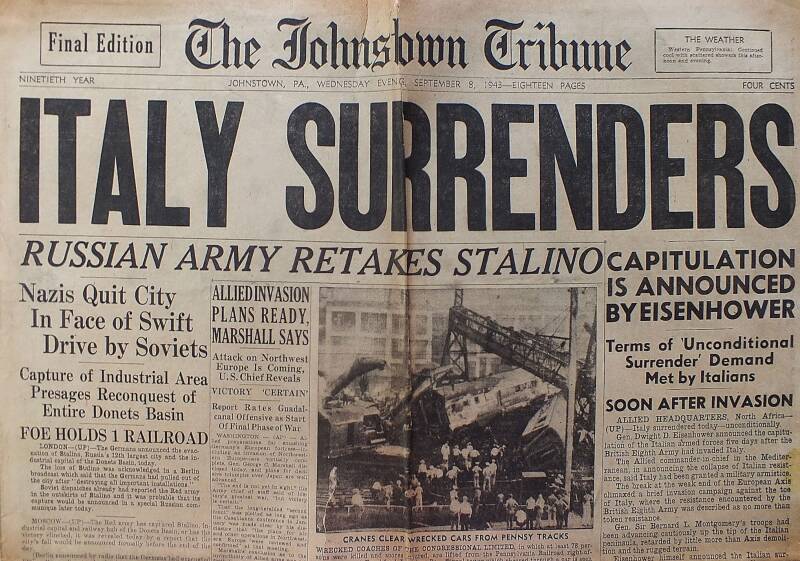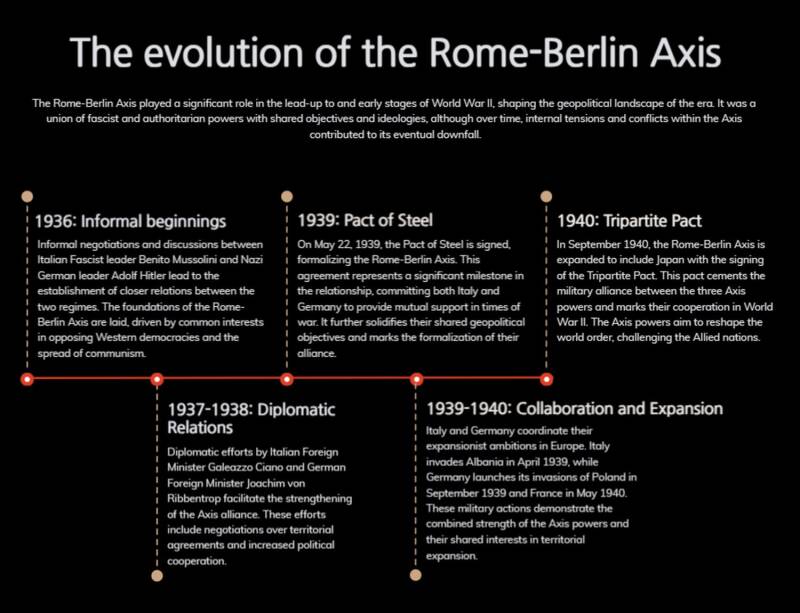Fascists and Nazis unite
Hitler and Mussolini 's unholy alliance
The Rome-Berlin Axis, signed on the 25th October 1936, was a political and military alliance formed between Fascist Italy and Nazi Germany in the lead-up to and during the Second World War, and remains a crucial episode in 20th-century history.
This alliance significantly shaped the course of the war and had far-reaching consequences for Europe and the world. To understand the Rome-Berlin Axis fully, it is essential to delve into its background, developments, politics, personalities, and outcomes.
Adolf Hitler and Benito Mussolini. The German and Italian leaders were responsible for the creation of the Rome-Berlin Axis, a development which help hasten the outbreak of the Second World War.
Background
To appreciate the significance of the Rome-Berlin Axis, it is essential to examine the historical context in which it emerged. Italy and Germany were both states that underwent significant political and economic turmoil in the aftermath of World War I.
The Treaty of Versailles, which concluded the war in 1919, imposed heavy penalties on Germany, including territorial losses and severe financial reparations.
These punitive measures, combined with the widespread economic suffering and political instability of the Weimar Republic, created a volatile environment that ultimately facilitated Adolf Hitler's rise to power.
Delegates observe the signing of the Treaty of Versailles in 1919, which imposed heavy penalties on Germany and would ultimately help usher Hitler into power in Germany.
(17) Peace Conference Versailles 1919 [1200 x 900] [Colorized] : HistoryPorn (reddit.com)
...Mussolini's fascist regime aimed to revive Italian national pride...
Italy, on the other hand, was a member of the victorious Allied Powers during the First World War. However, despite its victory, Italy felt that its territorial claims were not adequately addressed in the post-war settlement.
The disappointment over the territorial gains secured in the Treaty of Versailles, such as the disputed port city of Fiume, and the economic struggles during the interwar period contributed to Italy's growing discontent with the international order.
In Italy, Benito Mussolini's Fascist Party seized power in 1922, exploiting widespread dissatisfaction with the political establishment.
Mussolini's fascist regime aimed to revive Italian national pride and expand its influence, seeking to establish Italy as a major power in Europe.
Meanwhile, in Germany, Adolf Hitler and the Nazi Party rose to power in 1933, promising to undo the Treaty of Versailles, rebuild Germany's military, and assert the country's dominance.
Dictator Benito Mussolini and Fascist Party leaders during the March on Rome.
Difference Between Totalitarianism, Authoritarianism, Fascism (thoughtco.com)
Stefano Bianchetti/Corbis via Getty Images
The role of Ciano
Gian Galeazzo Ciano, Italian diplomat and politician who served as Foreign Minister in the government of his father-in-law, Benito Mussolini, from 1936 until 1943.
The Rome-Berlin Axis, which was initially an informal partnership, was formalized in a series of agreements and declarations. One of the key events that solidified the alliance was the signing of the Pact of Steel on 22nd May 1939. This pact represented a military and political alliance between Italy and Germany, effectively committing both nations to support each other in times of conflict.
Galeazzo Ciano, an Italian diplomat and politician, played a significant role in the formation of the Rome-Berlin Axis. Ciano was Mussolini's son-in-law and served as the Italian Foreign Minister from 1936 to 1943.
In this capacity, he played a crucial role in strengthening Italy's relationship with Nazi Germany. Ciano was responsible for negotiating and solidifying the alliance between Italy and Germany, which was based on shared political ideologies, territorial ambitions, and a common opposition to the Western democracies and the Soviet Union.
Ciano's diplomatic efforts included meetings and negotiations with high-ranking German officials, such as Joachim von Ribbentrop, the German Foreign Minister.
The Rome-Berlin Axis was seen as a precursor to the later Tripartite Pact, which also included Japan and was signed in 1940.
This pact solidified the military cooperation between these powers during the Second World War.
Developments
The formation of the Rome-Berlin Axis was a response to the diplomatic isolation faced by both Italy and Germany during the 1930s.
The League of Nations, established after the First World War as a means of promoting peace and international cooperation, had proven ineffective in preventing the aggressive expansionist policies of Japan, Italy, and Germany. This diplomatic isolation and the shared grievances of both nations laid the groundwork for closer ties between Mussolini and Hitler.
The first significant step towards the formation of the Axis came with the Italo-German Treaty of Friendship and Non-Aggression, signed in 1936.
This treaty, also known as the Anti-Comintern Pact, was aimed at countering the influence of the Communist International, which was perceived as a common threat by Italy and Germany. The pact solidified their relationship, establishing the foundation for future collaboration.
A contemporary cartoon criticising the League of Nations. The League had been unable to stop the aggressive actions of Germany, Italy and Japan, sowing the seeds (as suggested in the cartoon) for a future world war.
League Of Nations Cartoon Drawing by Granger - Fine Art America
Politics
Dust jacket of 1926–1928 edition of Mein Kampf. Hitler's political autobiography presented the racist philosophy of Lebensraum advocated for Germany by the Nazi Party.
https://en.wikipedia.org/wiki/Lebensraum
New York Public Library Digital Collection
The Rome-Berlin Axis was rooted in the political ideologies and ambitions of Mussolini and Hitler. Both leaders were fervent nationalists who sought to expand their nations' influence on the world stage.
Mussolini's fascist regime aimed to create a new Roman Empire, harking back to the glory of ancient Rome.
In contrast, Hitler's vision revolved around the concept of Lebensraum, or living space, which necessitated territorial expansion to accommodate the German population and provide resources for the country's growth.
The concept of Lebensraum was originally articulated by Friedrich Ratzel, a German geographer and ethnographer, in the late 19th and early 20th centuries. Ratzel's ideas were centered around the notion that a nation's geographical expansion and territorial acquisitions were essential for the well-being and survival of its people.
...Mussolini and Hitler were both deeply opposed to the spread of communist ideology...
Cover of the booklet 'Great Anti-Bolshevist Exhibition' produced by the German Ministry of Propaganda in 1937. Both Hitler and Mussolini were hostile to Communism.
Their shared disdain for the Treaty of Versailles and the international order established by the League of Nations bound Mussolini and Hitler together.
They both rejected the restrictions imposed on their countries and were determined to overturn the post-First World War settlement.
These common goals made the Axis a politically expedient alliance.
The Axis powers also shared a mutual fear of Bolshevism and communism. Mussolini and Hitler were both deeply opposed to the spread of communist ideology, and the Anti-Comintern Pact solidified their commitment to combating the perceived communist threat.
This ideological common ground further reinforced the Rome-Berlin Axis.
Personalities
The personal dynamics between Benito Mussolini and Adolf Hitler were integral to the functioning of the Rome-Berlin Axis.
Both leaders had distinct personalities, and their relationship evolved over time.
Mussolini, who came to power earlier than Hitler, initially regarded the Nazi leader as a junior partner.
However, as Hitler's ambitions and successes grew, Mussolini increasingly found himself playing second fiddle.
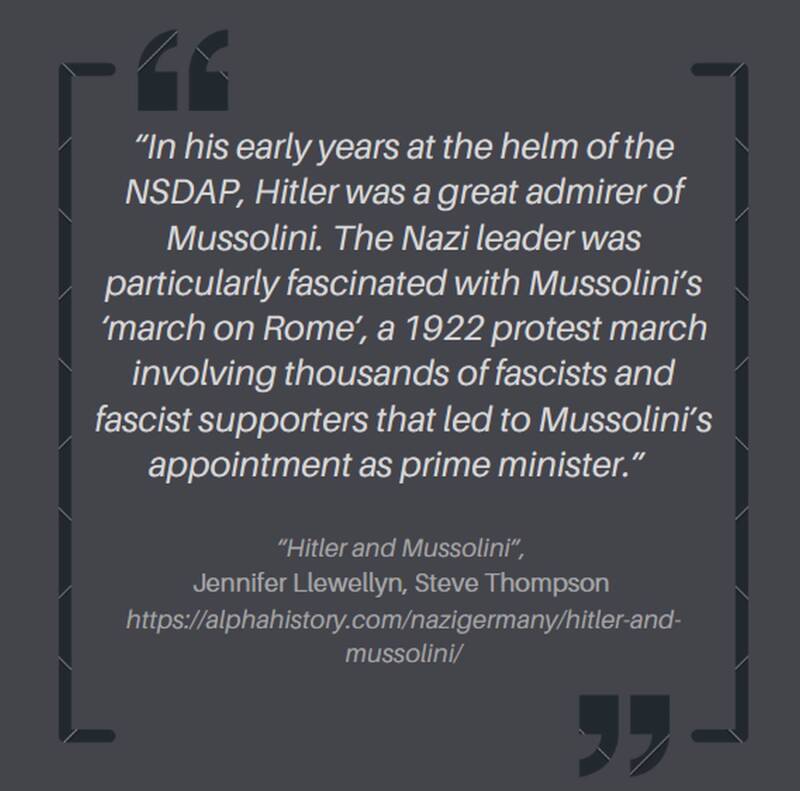
Mussolini's regime had a head start in implementing fascist policies, but by the late 1930s, he relied on Hitler's military and political support.
Mussolini's personality, once marked by arrogance, gave way to a sense of insecurity and a desire to regain his status as the dominant figure in the Axis.
Benito Mussolini, Italian dictator, possessed charisma, rallying Italians with his oratory skills. His leadership brought stability after the First World War but also fostered authoritarianism, suppressing dissent and limiting civil liberties. His aggressive expansionist policies would lead to disastrous alliances in the Second World War and the eventual downfall of his regime.
From Che Guevara to Mussolini: 10 Historical Figures in Color Images (uol.com.br)
...Despite their differences, Mussolini and Hitler had a complex, symbiotic relationship...

Hitler, on the other hand, had a more assertive and dominant personality. He often made decisions that affected both Axis powers without consulting Mussolini, leading to tensions in their relationship. Nevertheless, Hitler valued Mussolini's support and viewed Italy as a valuable partner in the war to come.
Despite their differences, Mussolini and Hitler had a complex, symbiotic relationship. Mussolini offered Germany a foothold in the Mediterranean and access to Italian military resources. In return, Hitler provided much-needed assistance to the Italian military during its military campaigns in Spain and North Africa.
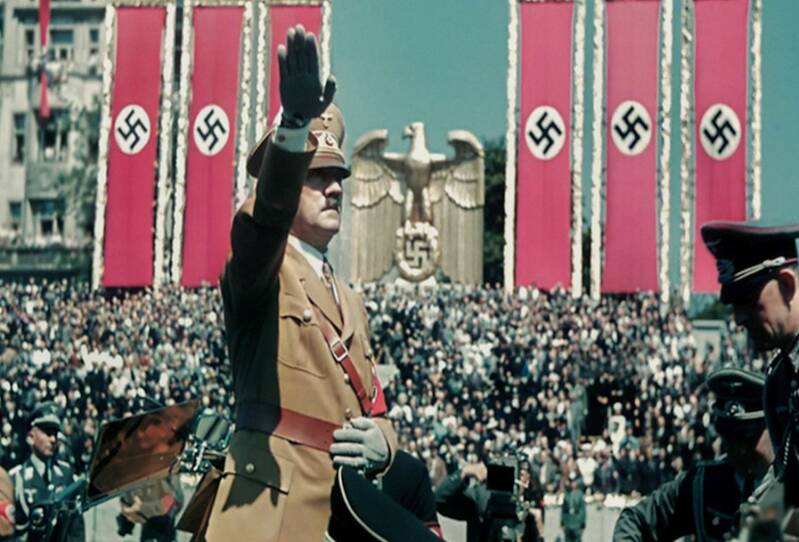
Adolf Hitler, Nazi dictator, displayed charisma and oratory skills, captivating a disillusioned Germany in the 1930s. However, his leadership was marked by extreme nationalism, authoritarianism, and racial hatred. Under his rule, the Holocaust and Second World War atrocities would lead to immense suffering and the deaths of millions.
Outcomes
The Rome-Berlin Axis had significant consequences for the course of the Second World War and its aftermath. Several key outcomes can be identified:
- Military Cooperation: The Axis powers collaborated militarily in various campaigns. Italy and Germany cooperated in the Spanish Civil War, where they supported Francisco Franco's nationalist forces. This war served as a testing ground for Axis military strategies and tactics, allowing them to refine their combined operational capabilities.
- Expansionism: The Axis powers embarked on a series of territorial expansions. Italy's invasion of Ethiopia in 1935 and its occupation of Albania in 1939 were early indications of their expansionist ambitions. Meanwhile, Hitler's aggressive moves in Eastern Europe, including the annexation of Austria - the Anschluss - and Czechoslovakia, culminated in the invasion of Poland in 1939, which triggered the Second World War.
German troops entering Austria during the Anschluss: Hitler's successful annexation of neighbouring Austria in 1938 paved the way for future territorial claims.
https://www.vintag.es/2013/03/old-photos-of-anschluss-from-75-years.html
...Italy was ill-prepared for a full-scale war, and the German military had to divert resources to support its Italian ally....
- The Pact of Steel: In 1939, Italy and Germany signed the Pact of Steel, a military alliance that committed both nations to come to each other's aid in the event of war. This pact further solidified their partnership and made Italy a full-fledged military partner in the impending world conflict.
- Strategic Cooperation: The Rome-Berlin Axis had a significant impact on the strategic decisions of the Axis powers during the early years of the Second World War. Hitler's invasion of Poland in 1939 marked the beginning of the conflict, and Mussolini, eager to join the war's spoils, declared war on France and the United Kingdom in 1940. This decision, however, strained the alliance, as Italy was ill-prepared for a full-scale war, and the German military had to divert resources to support its Italian ally.
- African and Mediterranean Campaigns: The Rome-Berlin Axis had consequences in Africa and the Mediterranean as well. Italy's ambitions in North Africa, including its invasion of British-held Egypt, were supported by Germany. However, the Italian military's poor performance in North Africa placed additional strain on the Axis partnership.
Italian tanks in North Africa following the Italian invasion of British-held Egypt.
Italian Tanks North Africa - Italian Forces | Gallery (ww2incolor.com)
colorized by CupOfJoe
...The Rome-Berlin Axis played a significant role in the events of the Balkans and the Eastern Front...
Decline of the Axis: As the war progressed, the Axis powers faced mounting challenges. Italy's military failures in North Africa and the Balkans weakened the alliance. Germany's invasion of the Soviet Union in 1941, Operation Barbarossa, further strained the Axis, as Italy was not prepared for the campaign in the East. Mussolini's removal from power in 1943 and Italy's subsequent armistice with the Allies further fragmented the Axis.
The Balkans and Eastern Front: The Rome-Berlin Axis played a significant role in the events of the Balkans and the Eastern Front. In 1940, Italy invaded Greece, requiring German intervention to stabilize the situation. Similarly, when Germany launched Operation Barbarossa, Italy was involved in the Eastern Front, albeit with limited effectiveness.
The End of the Axis: The Rome-Berlin Axis ultimately dissolved as Italy switched sides in 1943, signing an armistice with the Allies. This event marked the beginning of the end for the Axis powers. The downfall of Mussolini's regime and the Italian contribution to the Allied war effort had a profound impact on the outcome of the Second World War.

German tanks advance during Operation Barbarossa - Hitler's invasion of the Soviet Union - in 1941. Italian forces would also take part in the invasion as well.
Operation Barbarossa Photographs: Why Did Operation Barbarossa Failed (historycollection.com)
Conclusion
The Rome-Berlin Axis, a political and military alliance between Fascist Italy and Nazi Germany, played a crucial role in the lead-up to and during the Second World War. It emerged from the shared grievances of both nations regarding the post-First World War international order and their desire to overturn the Treaty of Versailles.
The alliance was cemented through political, ideological, and strategic commonalities, including their opposition to communism and their expansionist ambitions.
The personal dynamics between Mussolini and Hitler also played a significant role in the alliance, with Mussolini initially viewing Hitler as a junior partner. However, over time, Hitler's dominance grew, leading to tension in their relationship. Despite their differences, the Rome-Berlin Axis had a significant impact on the course of the Second World War and its outcomes.
The alliance led to military cooperation, territorial expansion, and strategic decisions that marked the early years of the war. However, Italy's military failures in North Africa and the Balkans, coupled with its eventual switch to the Allied side, contributed to the decline of the Axis powers.
''[Rome-Berlin Axis] Ring a Ring o' Roses'' - Swiss cartoon from ''Nebelspalter'' magazine produced by artist Gregor Rabinovitch) in May 1939.
The dissolution of the Rome-Berlin Axis was a turning point in the war and had profound consequences for the eventual outcome of the Second World War.
Italys surrender in 1943 (and switching to the Allied side) marked the end of the Rome-Berlin Axis.
The Johnstown Tribune - WWII: September 8, 1943: ITALY SURRENDERS (jtownww2.blogspot.com)
Further reading
Sources:
https://www.shockblast.net/hugo-jaeger-photography/amp/
https://www.reddit.com/r/HistoryPorn/comments/9xl4w5/peace_conference_versailles_1919_1200_x_900/
Jim H
https://comandosupremo.com/benito-mussolini/
https://www.thoughtco.com/totalitarianism-authoritarianism-fascism-4147699
Stefano Bianchetti/Corbis via Getty Images
https://fineartamerica.com/featured/3-league-of-nations-cartoon-granger.html
https://en.wikipedia.org/wiki/Lebensraum
New York Public Library Digital Collection
https://en.wikipedia.org/wiki/Themes_in_Nazi_propaganda
http://www.sickchirpse.com/colour-hitler/
https://alphahistory.com/nazigermany/hitler-and-mussolini/
“Hitler and Mussolini”, Jennifer Llewellyn, Steve Thompson https://alphahistory.com/nazigermany/hitler-and-mussolini/
https://historycollection.com/32-photographs-hitlers-operation-barbarossa/
https://encyclopedia.ushmm.org/content/en/article/axis-powers-in-world-war-ii
https://dictators-wiki.fandom.com/es/wiki/Galeazzo_Ciano
Stephanie Hodgson, “Hitler and Mussolini: A comparative analysis of the Rome-Berlin Axis 1936-1940” https://www.e-ir.info/2011/07/29/hitler-and-mussolini-a-comparative-analysis-of-the-rome-berlin-axis-1936-1940/
Hela Gorecka, “Friend or Foe? The Rome-Berlin Axis from the perspective of necessity and ideology.” https://retrospectjournal.com/2021/10/30/friend-or-foe-the-rome-berlin-axis-from-the-perspective-of-necessity-and-ideology/

